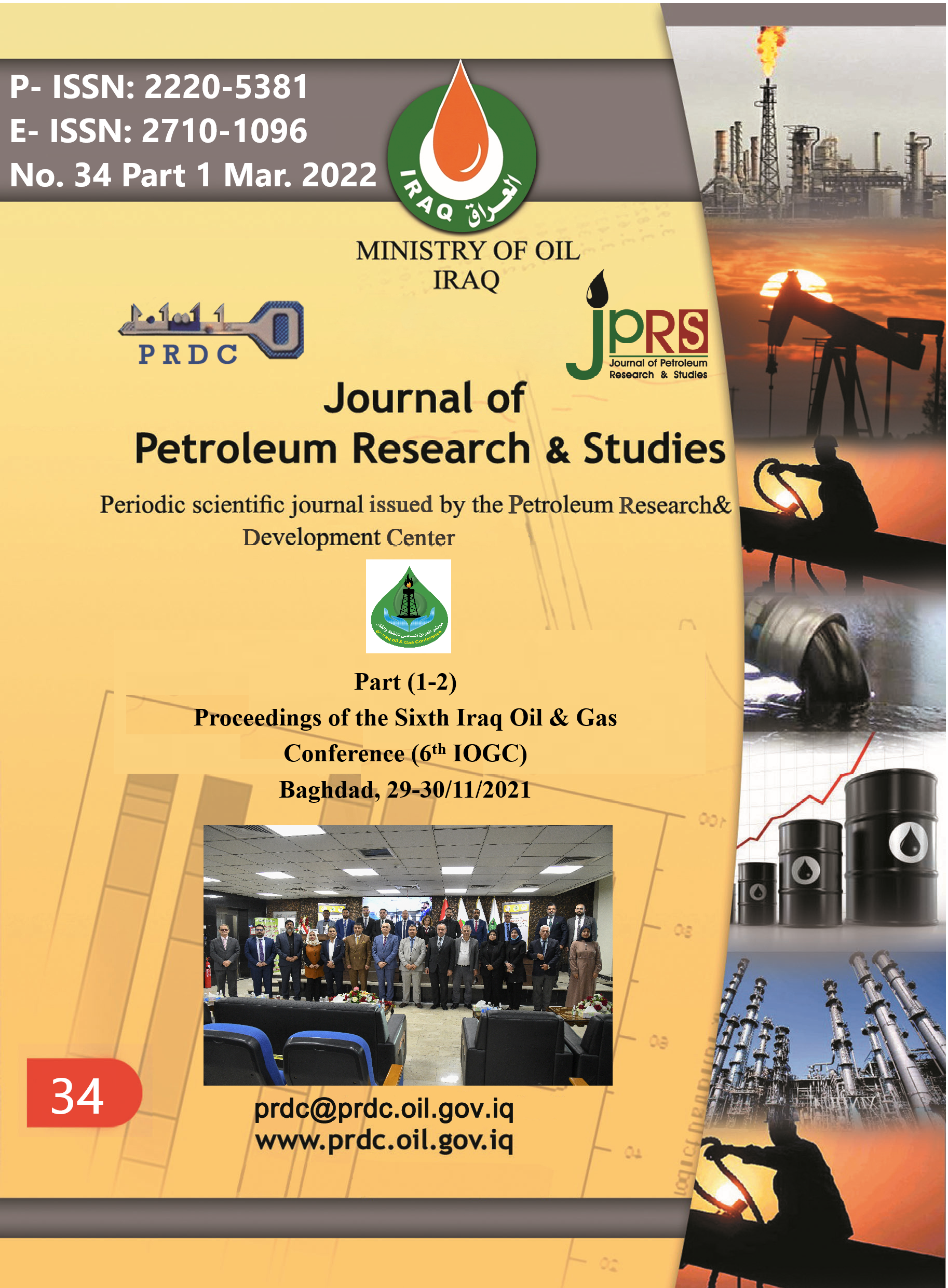An Experimental Study of the Effect of Different Blending Ratios of Dual and Triple Fuel Mixtures (Gasoline-Hydrogen-Ethanol) on Laminar Flame Speed
DOI:
https://doi.org/10.52716/jprs.v12i1.599Keywords:
Laminar Flame Speed, Flame Stretch Rate, Fuel blending, Liquid Fuel, dual Fuel Mixture, Triple Fuel Mixture.Abstract
Abstract
In a centrally ignited constant volume chamber, an experimental research on the laminar flame speed of premixed gasoline/ethanol/hydrogen/air mixtures is undertaken at varied initial pressures (0.1-0.3 MPa), constant initial temperature (593 K), and variable equivalency ratios (0.75-1.5). The mixing method is based on the energy replacement principle, and various component blending ratios are tested. This has necessitated the construction of a specific laboratory experimental equipment. The flame speeds are measured using the Shelerian photography technique using a high-speed camera. The results reveal that adding hydrogen to dual fuel mixtures has a considerable impact on stretched laminar flame speed. The stretched laminar flame speeds for 20 percent H2-80 percent G, 40 percent H2-60 percent G, and 60 percent H2-40 percent G are 3.71 m/s, 7.329 m/s, and 11.0267 m/s, respectively, at 0.1 MPa initial pressure and stoichiometric mixture. For 20 percent H2-80 percent G, 40 percent H2-60 percent G, and 60 percent H2-40 percent G mixtures, the un-stretched flame speed at atmospheric pressure and stoichiometric is computed and found to be 1.23 m/s, 3.67 m/s, and 7.093 m/s, respectively. When the initial pressure is increased, both stretched and un-stretched flame rates drop. "
The results of the triple fuel mixes demonstrate that the influence of ethanol addition on the stretched laminar flame speed is significant at constant hydrogen blending ratios, with 2.24 m/s at 20% H2-16% E-64 percent G and 2.68 m/s at 20% H2-32 % E-48 % G at 0.1 MPa for stoichiometric mixture. For dual fuel combinations, the effect of starting pressure on stretched and un-stretched flame speeds is the same. Where the flame speed has a maximum value for stoichiometric combustion, the equivalence ratio has a greater effect on flame speed. "
References
Taylor, Simon Crispin “Burning velocity and the influence of flame stretch”.
Ph.D. thesis, Department of Fuel and Energy University of Leeds, UK, (1991).
2-Y. Dong, C. M. Vagelopoulos, G. R. Spedding, and F. N. Egolfopoulos "Measurement of laminar flame speeds through digital particle image velocimetry: Mixtures of methane and ethane with hydrogen, oxygen, nitrogen, and helium," Proc. Combust. Inst., vol. 29, pp. 1419-1426, (2002).
Z. Zhao, J. P. Conley, A. Kazakov, and F. L. Dryer "Burning velocities of real gasoline fuel at 353 K and 500 K," SAE Int. , vol. 112, pp. 2624-2629, (2003).
K. J. Bosschaart and L. P. H. De Goey, "The laminar burning velocity of flames propagating in mixtures of hydrocarbons and air measured with the heat flux method," Combust. Flame, vol. 136, pp. 261-269, (2004).
Z. Zhao, "Experimental and numerical studies of burning velocities and kinetic modeling for practical and surrogate fuels". PhD: University of Princeton, (2005).
J. Natarajan, T. Lieuwen, and J. Seitzman, "Laminar flame speeds of H2/CO mixtures: Effect of CO2 dilution, preheat temperature, and pressure," Combust. Flame, vol. 151, pp. 104-119, (2007).
G. P. Smith, D. M. Golden, M. Frenklach, N. W. Moriarty, Z, B. Eiteneer, M. Goldenberg, T. Bowman, R. K. Hanson, S. Song, W. C. Gardiner, V. V. Lissianski, and Z. Qin, "GRI-Mech 3.0 Available from www.me.berkeley.edu/gri_mech/, (2016).
S. G. Davis, A. V. Joshi, H. Wang, and F. Egolfopoulos, "An optimized kinetic model of H2/CO combustion", Proc. Combust. Inst., vol. 30, pp. 1283-1292, (2005).
Erjiang Hu, Zuohua Huang, Jianjun Zheng, Qianqian Li, Jiajia He, “Numerical study on laminar burning velocity and NO formation of premixed methane–hydrogen–air flames”, International journal of Hydrogen Energy, vol. 34, pp. 6545- 6557, (2009).
T. Tahtouh, F. Halter, C. Mounaim-Rousselle, "Measurement of laminar burning speeds and Markstein length using a novel methodology", Combustion and Flame, vol. 156, pp. 1735-1743, 2009.
Ganeshan , Internal Combustion Engine ” third edition Published By the Tata McGraw-Hill Publishing Company Limited, 7 West Patel Nagar, New Delhi 110008. pp 372-375, (2010).
G. Broustail P. Seers F. Halter G. Moréac C. Mounaim-Rousselle, "Experimental determination of laminar burning velocity for butanol and ethanol iso-octane blends" Journal of Fuel, Vol. 90 Issue 1, (1–6), (2011) .
Hagos F., Aziz A., Sulaiman S. "Effect of air – fuel ratio on the combustion characteristics of syngas (H2: CO) in direct injection spark ignition engine" Energy Procedia (2014) 61 2567-2571, (2014)
Ahmad Shakir and Haroun A. K. Shahad, “Experimental Study of the Effect of Hydrogen Blending on Burning Velocity of Different Fuels" M.Sc. Thesis, University of Babylon, (2016).
Oras Khudhayer and Haroun A. K. Shahad, “A Review of Laminar Burning Velocity and Flame Speed of Gases and Liquid Fuels”. International Journal of Current Engineering and Technology E-ISSN 2277 – 4106, P-ISSN 2347 – 5161 ©2017 INPRESSCO, Accepted 02 Feb 2017, Available online 12 Feb 2017, Vol.7, No.1 (Feb 2017).
Downloads
Published
How to Cite
Issue
Section
License
Copyright (c) 2022 Oras Khudhayer Obayes, Haroun A. K. Shahad

This work is licensed under a Creative Commons Attribution 4.0 International License.














